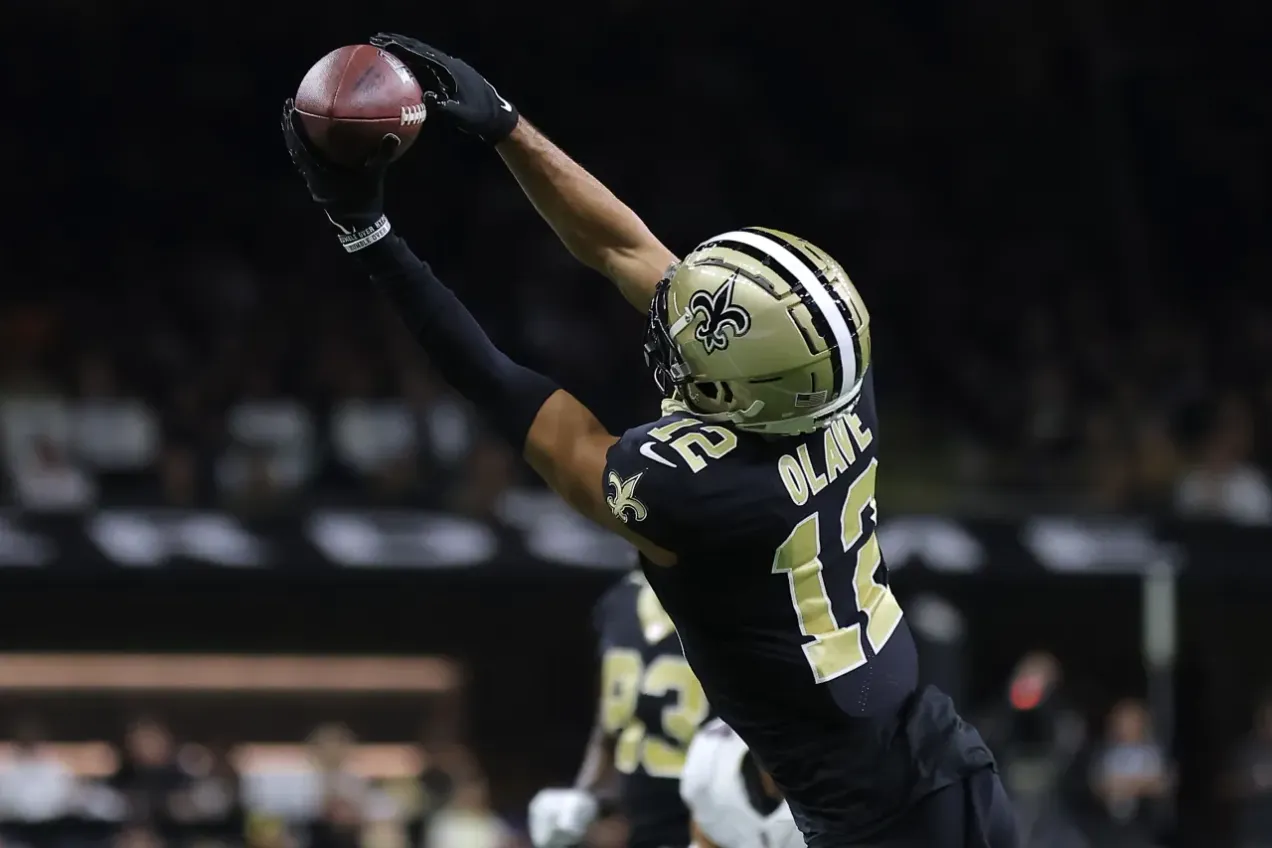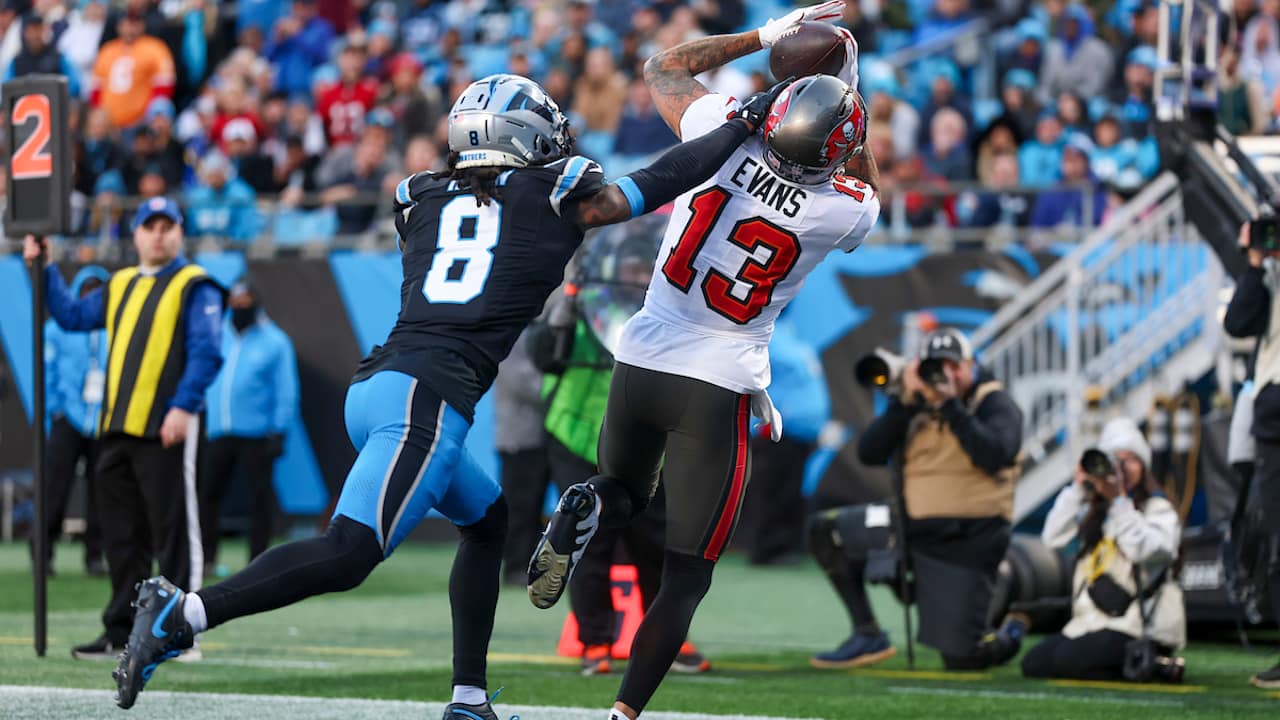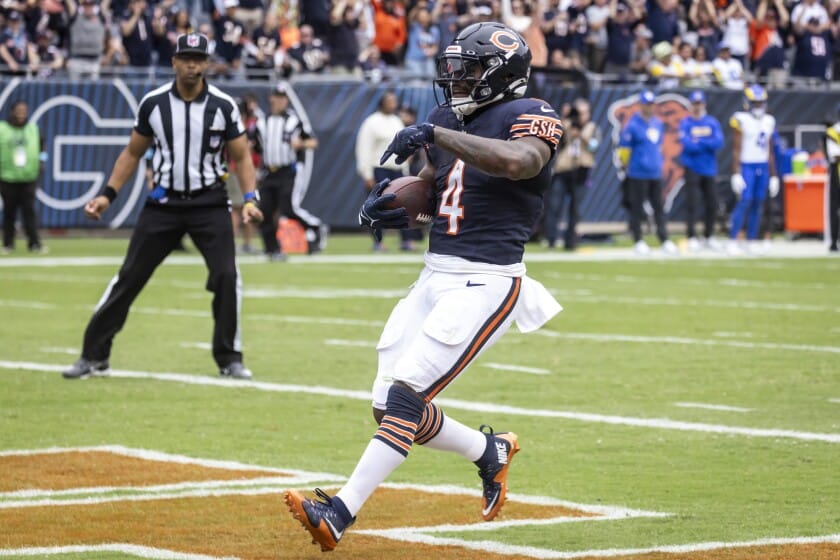
A Framework for Correctly Applying Regression and Studying Outliers from 2024, Volume 2: Running Backs
As we explored with QBs in Volume 1, regression analysis in fantasy football isn’t about predicting collapse. Instead, it's about recognizing when production will likely stabilize.
TDs are inherently volatile since they are the rarest and highest-scoring element in fantasy scoring computation, making them prime for regression. Extreme outliers, whether above or below expectations, provide the strongest signals. And, of course, elite players often outperform league averages not because they defy regression but because their talent and role elevate their baseline expectations.
Regression is often misunderstood as a forced rebalancing act rather than a probabilistic trend. Some assume players must counteract overperformance with underperformance, while others mistake an outlier season for a new norm. The truth lies between these extremes: variance exists, but opportunity and skill dictate whether a player sustains heightened efficiency. Applied correctly, regression helps us find value in fantasy football. Yet, forced into the wrong context, regression can lead to poor conclusions.
In Volume 1, we examined these concepts in-depth with QBs, whose high play volume smooths out statistical fluctuations. Now, in Volume 2, we turn to RBs, where variance plays a more pronounced role. With fewer touches per game, each opportunity carries more weight, making TD production highly volatile.
Additionally, because elite QBs sustain elevated or reduced TD rates over time, we can more quickly identify which players consistently perform above or below league baselines. RBs with shorter careers and smaller sample sizes, rarely provide enough data to establish long-term baselines before their effectiveness declines. By the time we eventually collect enough data points to make the numbers trustworthy, the player may no longer be the same as he was when we started.
As a result, regression for RBs is less predictable and requires more context. RB-based TD regression is often less informative and more nuanced than QB-based TD regression.
But, while we want to approach realistically, RB regression analysis is not devoid of all merit. There is still value in the outliers. So, let’s examine the most significant RB touchdown outliers from 2024—both positive and negative—to see if some advantage can be gained.
THE OVERACHIEVING RUNNING BACKS
As I did with QB, I’d like to explain what we are looking at with this chart. All players in the table must have at least 100 RB Opportunities (rushing attempts + targets) to qualify. Total YDs and TDs combine rushing and receiving stats. To the right of PPR, TDs/YDs are rounded to the thousandth to make the numbers less overwhelming. The league base rate is the average of these values.
Expected TDs are calculated by multiplying the league base rate by a player's total yardage. TDOE is the difference between actual and expected TDs. The result is a z-score, where values further from zero indicate more meaningful outliers, roughly half above and half below zero.
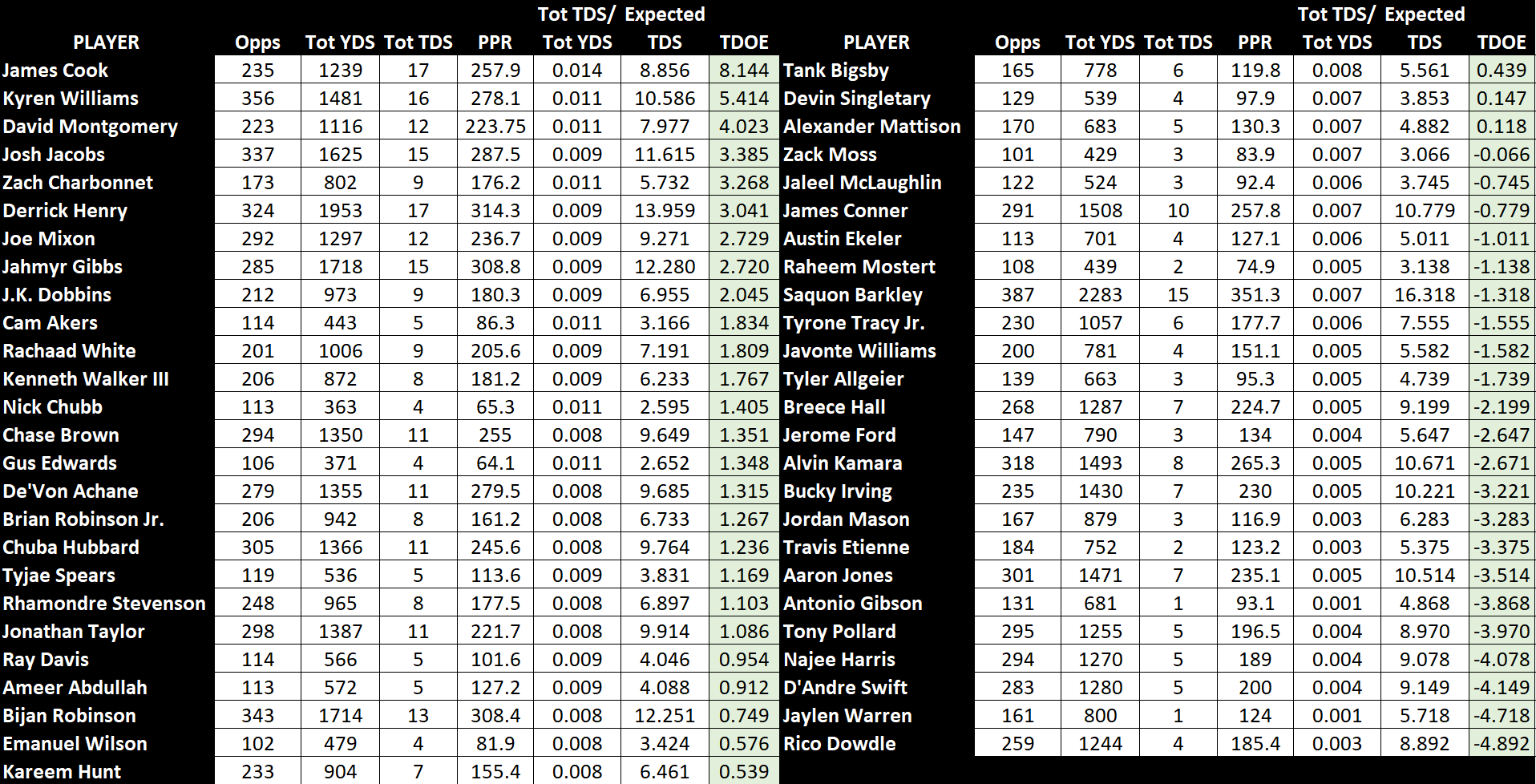
JAMES COOK (Underdog ADP: RB15)
James Cook was the most significant outlier in TDs/YDs at the RB position in 2024. He is a screaming negative regression candidate.

Cook posted 15 rushing TDs last year—13 more than in each of his first two seasons. Though his total yardage dipped from 1,515 to 1,239, his combined TDs rose by 11. His rushing TD rate skyrocketed to 7.6%, surpassing his previous career best of 2.5% in 2022 and his sub-1% rate in 2023.
Cook’s 2024 rushing TD rate ranks 11th since 2000 among RBs with at least 100 carries. Among the top 12 seasons in rushing TD rate over that span, the average drop in TD rate the following year was 3.9%—excluding Jerome Bettis, who retired, and Cook’s yet-to-be-written 2025 season.
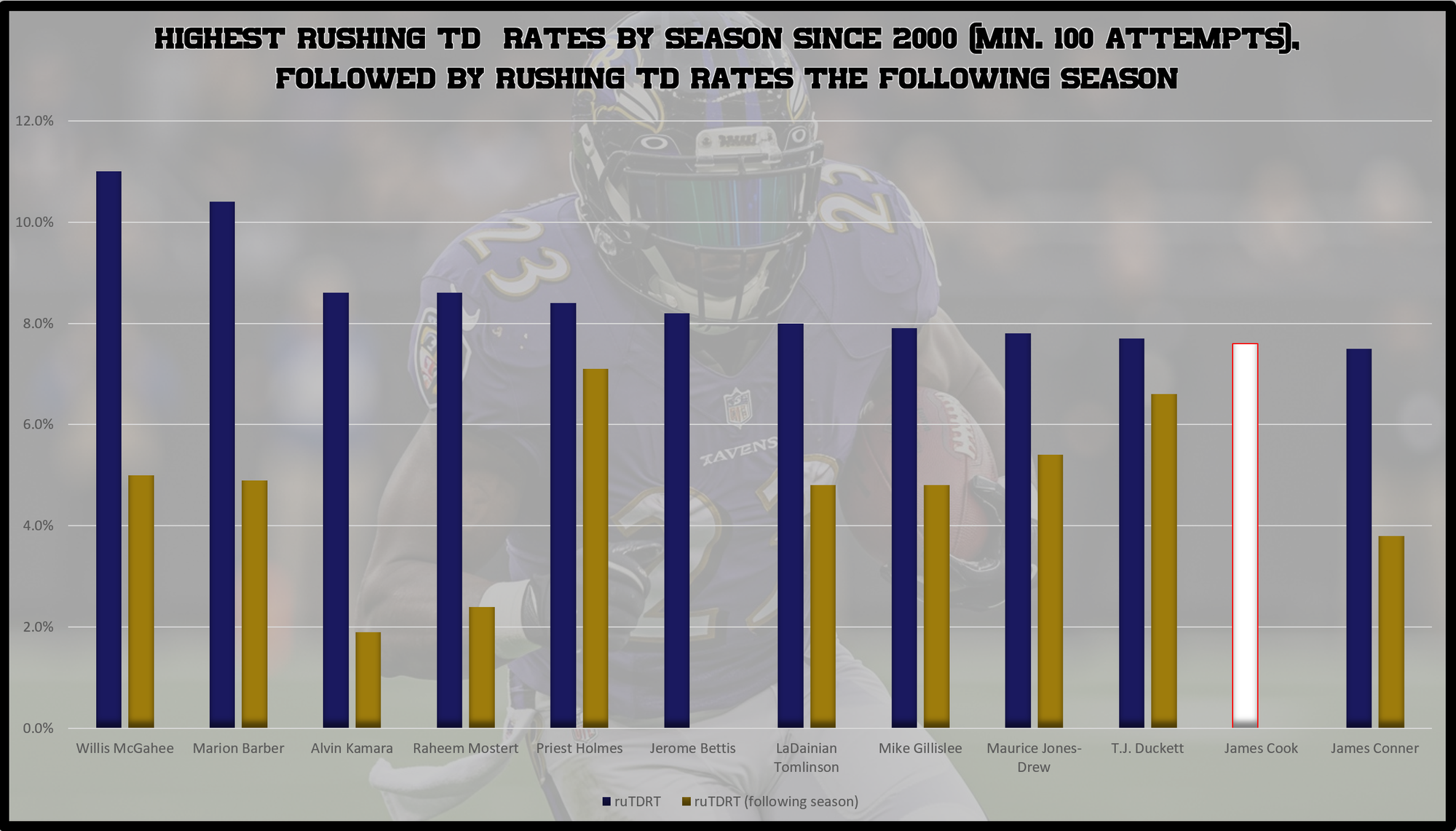
Every person on this list has declined in TDs in the following season. There was an average decline of 9.6 rushing TDs the following year, equating to a loss of 56.4 fantasy points per player. With a league-leading 15 rushing touchdowns, Cook finished as RB9 through 17 weeks last season[1], posting 257.9 PPR points. A 56.4-point drop would put him at 201.5 PPR, which would have been the RB20 in 2024.
Generally, pass-catching RBs are more insulated from TD regression than those who don’t specialize in the passing game. However, Cook shared the receiving work a lot last year, ceding as many receptions as he earned to the combination of Ray Davis and Ty Johnson. He also faces rushing TD competition from his own QB, who is frequently utilized at the goal line. In fact, Josh Allen’s historical tendencies near the goal line are far more established and reinforced than Cook’s.
Finally, there is team-level TD regression. Buffalo scored 31 rushing TDs last year—one of the highest outputs by any team since 2000. Rushing TDs accounted for 51.7% of Buffalo’s total touchdowns, trailing only the Eagles in 2024. This type of imbalance also typically regresses year-over-year, so we should probably expect the Bills to score more passing TDs and fewer rushing TDs in 2025.
Cook is being drafted as the RB15 on Underdog, demonstrating good restraint by the fantasy community (Cook would have certainly been puffed up after a season like this in the days of old).
This seems like a decent ADP to me, as Cook is still a member of a stable offense that should score frequently. Even if he negatively regresses from his nuclear 2025 rushing TD rate, he has a very good chance to surpass the mean and remain in the top 12 conversation.
KYREN WILLIAMS (Underdog ADP: RB11)
Kyren Williams is a regression candidate based on league baselines, scoring 5.5 TDOE—the second-highest among RBs. He found the end zone more often in 2024 than in his breakout 2023 season, but he was also healthier, playing four more games and entering the year as the team's clear starter (whereas in 2023, Cam Akers opened the season as the starter). While Williams’ TD rate was actually higher in 2023, he has been outstanding in each of his first two seasons as the Rams’ lead back.

Rams HC Sean McVay consistently fields one of the most efficient rushing attacks in the NFL. Since taking over in LA, his RBs have routinely posted a rushing TD rate of 40% or higher. In fact, Williams’s 2024 season ranked only sixth among Rams RBs with at least 400 rushing yards since 2017. The fact that Todd Gurley, Williams, and even Malcolm Brown and Cam Akers have all reached the 40% mark—along with the reality that more of McVay’s primary RBs have hit that threshold than not—suggests that Williams’s 44% rushing TD rate from 2024 is entirely sustainable.
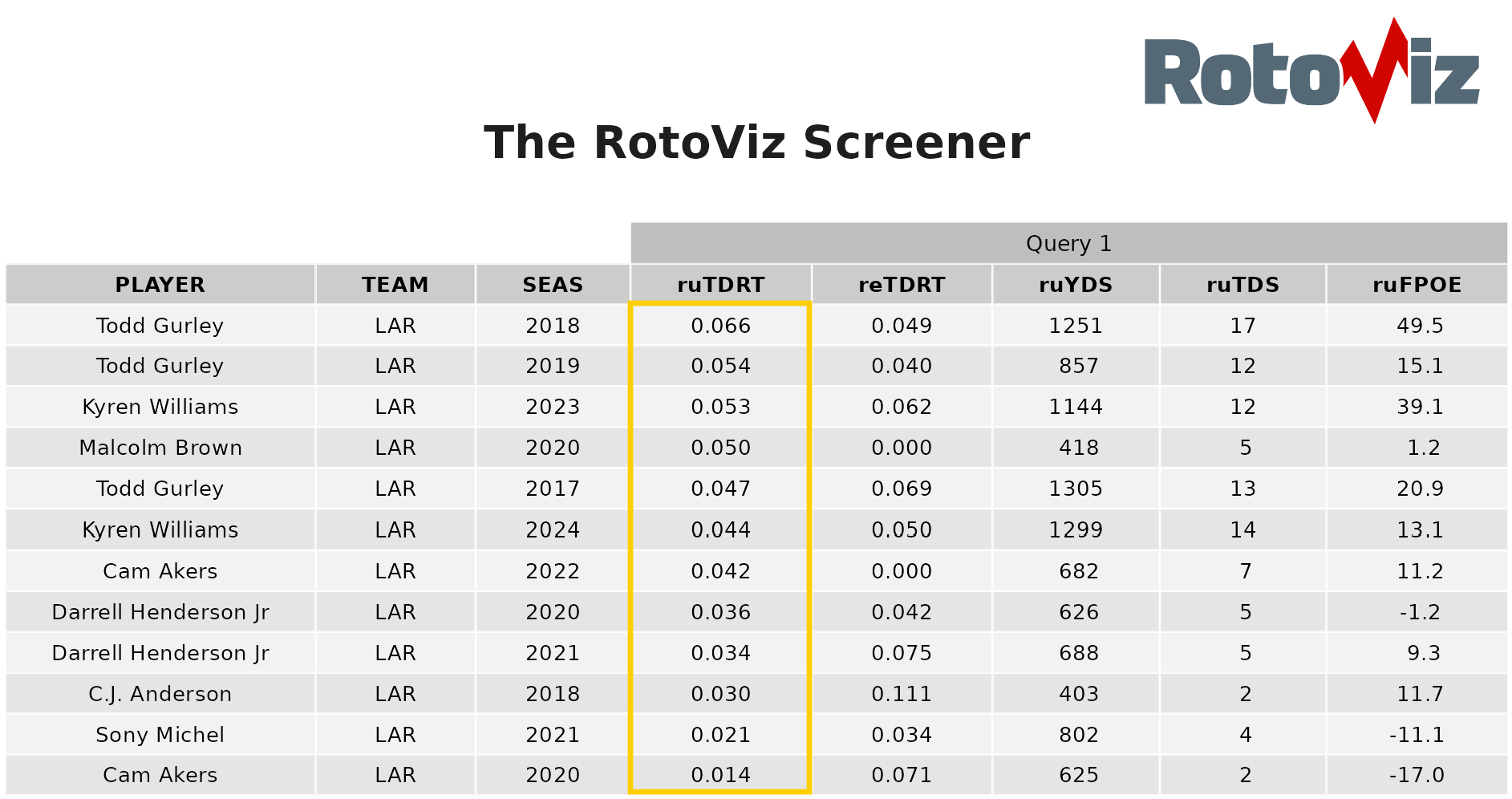
Williams hasn’t been utilized as a receiving back in the NFL, but pass-catching was a key part of his collegiate profile at Notre Dame. Many initially projected him as a scatback-style third-down option, given his perceived lack of size but strong pass-blocking and receiving skills. While I should be clear that he’s more likely to remain in his current role, the Rams' offense could see a significant shift with Cooper Kupp’s departure this offseason, creating the possibility of an expanded receiving workload for Williams. From 2017 to 2018, Todd Gurley amassed 1,368 receiving yards and 10 receiving TDs under McVay, propelling him to massive fantasy outputs. This is entirely speculative, but not hard to imagine.
It will be interesting to see how the ADP moves with the Rams taking Jarquez Hunter in the fourth round of the draft. And, of course, Blake Corum remains in the wings, giving LA two RBs taken in the first four rounds in the past two Aprils. Given his usage last year, as well as McVay's tendencies, it would be logical to assume Williams will remain in control.
At RB11 on Underdog, Williams seems reasonably priced—perhaps even a value.
DAVID MONTGOMERY (Underdog ADP: RB22)
David Montgomery was not viewed as a TD scorer until he arrived in Detroit, where he has posted two consecutive seasons with 12 TDs. Even so, his rushing TD rate was at its highest in 2024, rising to 6.5%.
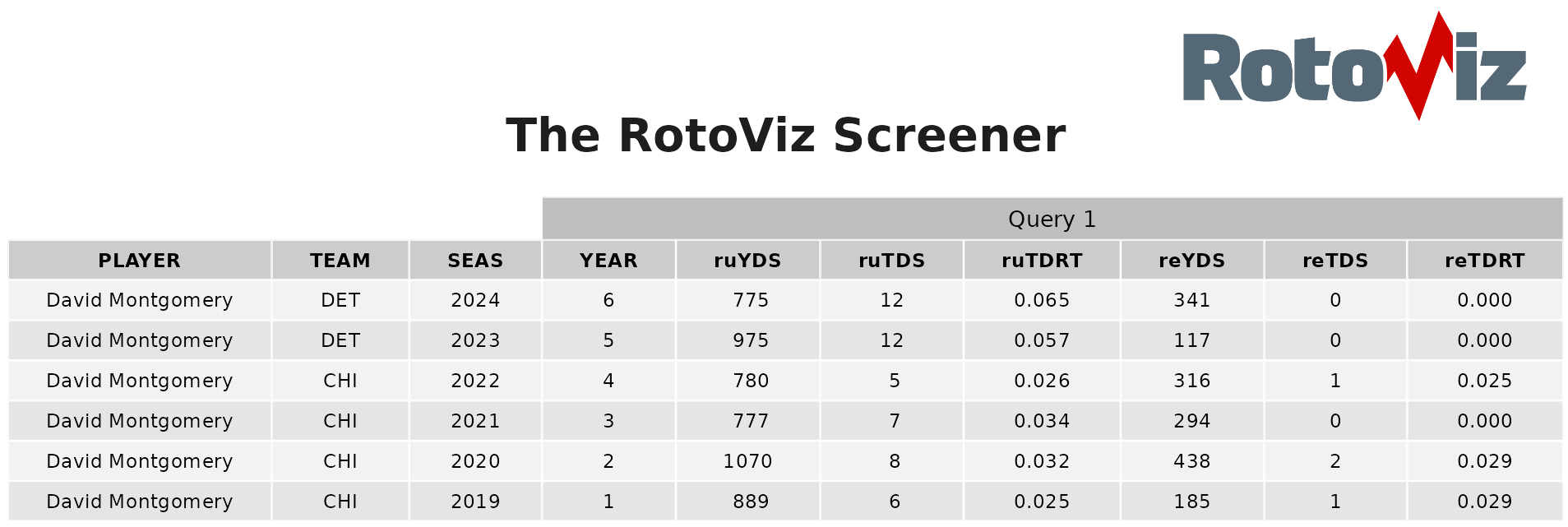
Montgomery was, at first, well regarded by the fantasy football community for two seasons while with the Bears, only to have it turn on him for two years after, when he was perceived as a Najee Harris type—a low-burst plodder who lacked dynamism. Now, after two seasons in Detroit, he is back in our good graces, viewed as a sturdy and reliable scorer in a good offense.
But what happens if the circumstances change? Because that's where we appear to be headed.
Jahmyr Gibbs proved himself to be an incredibly efficient and reliable back while Montgomery was out for three games last year. In Weeks 16-18, Gibbs was the highest PPR and FPOE earner in the NFL, trailing only Bijan Robinson in EP while handling the ball 25 times per game. There must be fear that Gibbs has carved out a more substantial role through this period of inflated success.
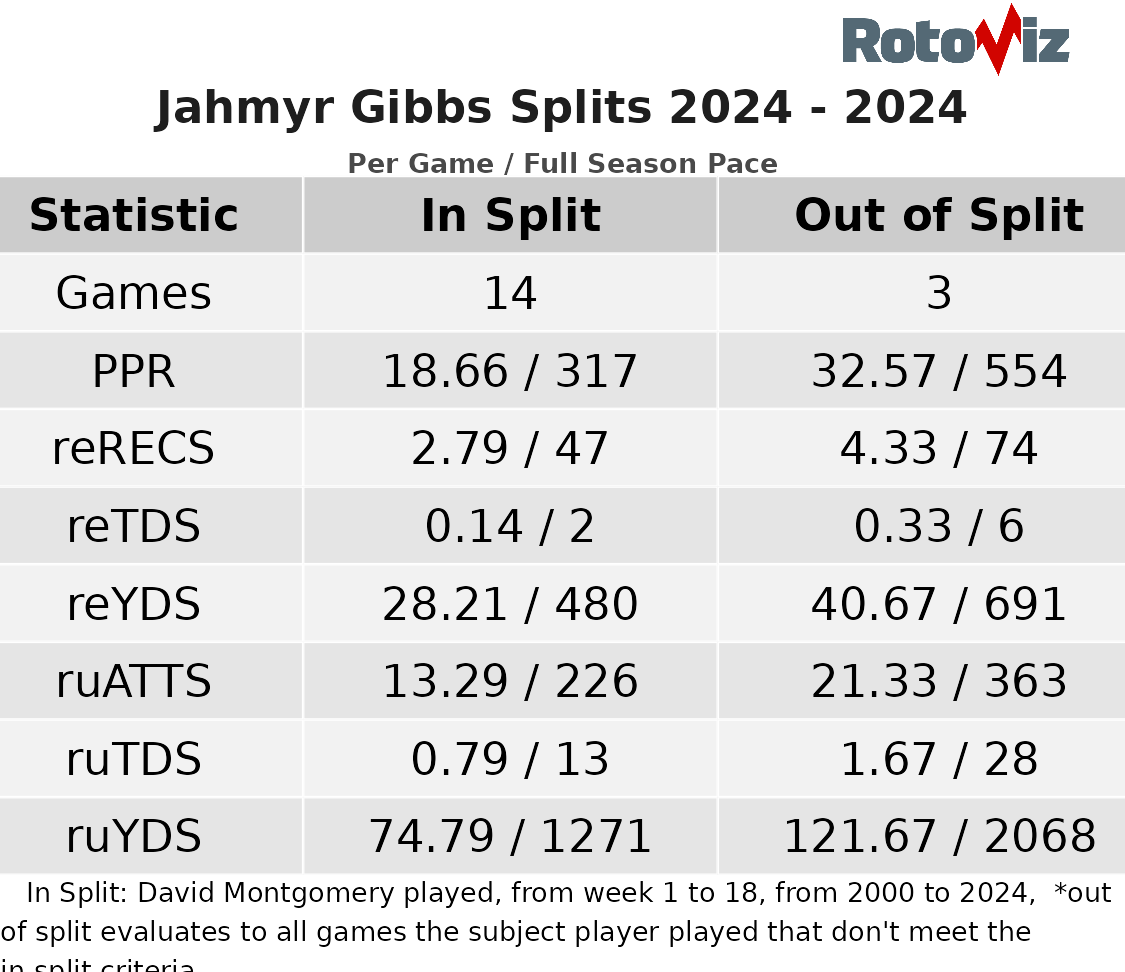
In addition, OC Ben Johnson has taken the HC job in Chicago. The Lions have brought in first-time OC John Morton, who spent time with Detroit in 2022 before becoming the Broncos’ passing game coordinator in 2023-2024. While it is unknown, he is expected to maintain a similar philosophy, but we have very little insight into how he will deploy his personnel.
Montgomery is going off the board as RB22, which also seems fair. He is a TD-dependent option, but he is still tied to a theoretically sophisticated offense with a strong offensive line. If Detroit truly continues to value the run as they have, Montgomery will still be quite functional and could beat this ADP without injury, but a sudden absence of Gibbs provides him a pathway to greater upside.

